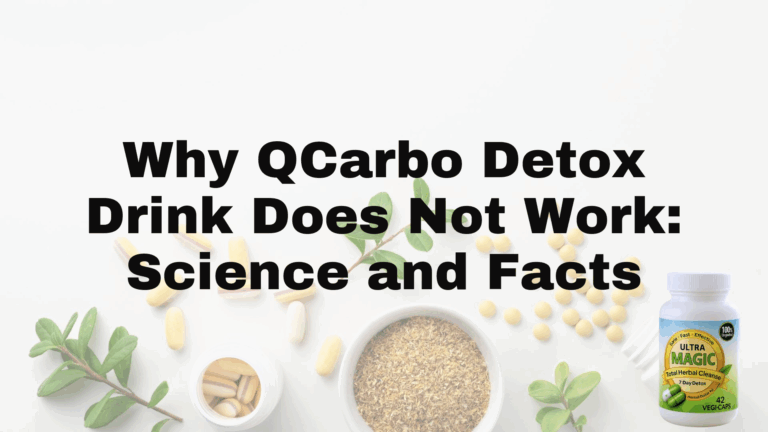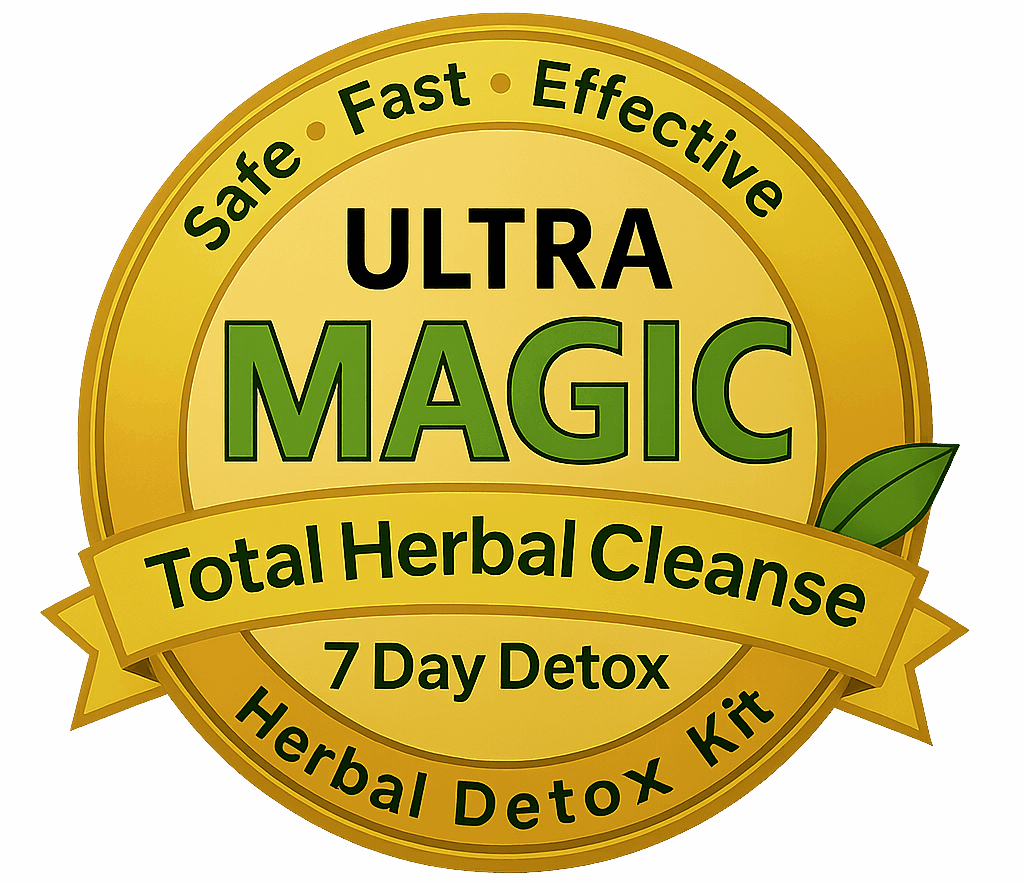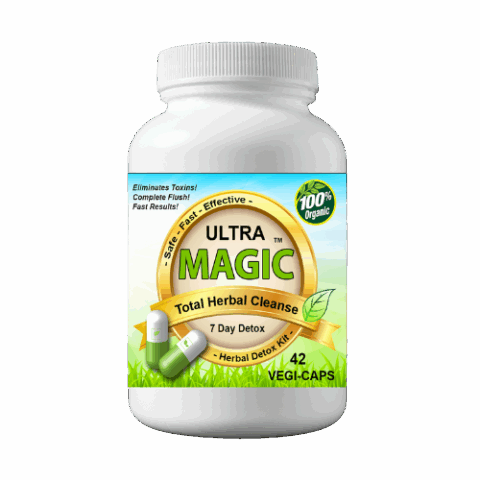
Why QCarbo Detox Drink Does Not Work: Science and Facts
If you’re searching “why QCarbo detox drink does not work” a day before a test, you’re not alone. QCarbo is a same‑day detox beverage marketed to “cleanse” your system fast—usually by flooding you with fluids, vitamins, and herbs to dilute urine while keeping it looking normal. The pitch is simple: drink, wait, pee clean. The reality is messier. Many people still fail, get flagged for dilution, or retest under supervision. This introduction explains the gap between the promise and what actually happens in modern drug testing.
In the sections ahead, we’ll break down what QCarbo claims, what the science says about detox drinks, and how today’s labs spot dilution and masking. We’ll cover detection windows that a drink can’t shorten, how your biology and timing affect results, side effects to know, and why home strips often contradict certified lab outcomes. You’ll also get practical alternatives, a checklist to evaluate detox claims, and when a structured, full‑body cleanse makes sense.
What QCarbo is and what it claims to do
QCarbo is Herbal Clean’s same‑day detox drink sold in sizes like QCarbo16 and QCarbo32 at big retailers. It’s marketed as a “Same‑Day Premium Detox Drink” with a strong blend of herbs designed to “cleanse and detox the body” and “eliminate toxins from lifestyle choices.” Like other detox drinks, the core pitch is fast, day‑of results: drink the bottle, chase with plenty of water, urinate several times, and you’ll be “cleansed” within a short window. Anecdotal instructions often add heavy hydration and limited food intake. The promise sounds simple—rapid, test‑day readiness—which is exactly why people search why QCarbo detox drink does not work after mixed results.
What science says about detox drinks
Here’s the uncomfortable truth behind the marketing: your liver and kidneys already do the detoxing, and there’s no credible evidence that bottled “detox” formulas speed that up. Reviews from medical sources note that detox claims are largely unsupported, with studies on “cleanses” plagued by design flaws. In practice, many drinks work by heavy hydration plus herbs/vitamins—temporarily diluting urine rather than removing metabolites—one reason people ask why QCarbo detox drink does not work when it matters.
- Evidence is weak: Major health sources report no substantial, research‑based proof that detox drinks clear drugs faster.
- Regulatory red flags: The FDA has pursued companies over false cleansing claims; NCCIH flags misleading detox advertising.
- Inconsistent outcomes: Even proponents admit results are unreliable; certified labs often detect tampering or dilution.
- Safety concerns: Extreme fluid intake and certain “detox” ingredients have led to serious events, including documented severe hyponatremia.
Understanding this sets up the next piece: how modern urine testing actually catches dilution and masking.
How modern urine drug testing really works
Modern urine testing isn’t fooled by a colorful drink—it looks for specific drug metabolites and checks whether the sample itself is valid. Certified labs follow standardized workflows and use sophisticated methods that flag tampering and over‑dilution. If an initial screen suggests drug use, a second, more sensitive test is typically performed. This is a big reason people ask why QCarbo detox drink does not work: most “same‑day cleanses” rely on dilution, which labs can detect and reject.
- Screen then confirm: An initial screen is followed by a more sensitive confirmation when indicated.
- Specimen validity checks: Labs detect diluted or tampered urine, often leading to invalid or inconclusive results.
- Outcomes: Negative, positive (with confirmation), or “dilute/invalid,” which commonly triggers a retest—sometimes under closer observation.
Dilution is detected: why “flushing” fails
“Flushing” is the core tactic behind many same‑day drinks: chug fluids (often with a hit of B‑vitamins to keep urine yellow) so metabolites are watered down. But certified labs don’t grade by color—they run specimen‑validity checks that spot over‑dilution and tampering. Instead of a quiet “pass,” you’re more likely to get a “dilute” or “invalid” result and be called back for a retest, sometimes under closer observation. That’s a big part of why QCarbo detox drink does not work reliably.
- Dilution ≠ detox: It lowers concentration temporarily; it doesn’t remove metabolites.
- Labs flag it: Advanced testing detects attempts to dilute, often yielding inconclusive results and retests.
- Second chances get tougher: Retests may be supervised, reducing any wiggle room from “flushing.”
Detection windows that no drink can shorten
Drug tests target metabolites that persist for fixed windows. No drink accelerates liver or kidney clearance; at best it dilutes urine, which validity checks catch. That’s the core reason—and why QCarbo detox drink does not work against the clock: detection windows are set by pharmacology and use patterns, not by vitamins, herbs, or food coloring.
- THC (cannabis): ~3 days for single use; heavy/chronic often >30 days.
- Cocaine metabolites: ~2–4 days.
- Opioids (e.g., oxycodone): ~2–4 days; heroin/codeine ~48 hours.
- Amphetamines/methamphetamine: ~48 hours.
- Benzodiazepines: ~3 days (short-acting) to ~30 days (long-acting).
Those ranges shift with body fat, frequency, and dose—your biology matters more than any bottle.
Your biology matters more than a bottle
On test day, the variables inside your body dominate the outcome. Age, sex, weight, body fat, metabolic rate, liver/kidney function, and—most importantly—how much and how often you used determine how long metabolites linger and at what concentration. THC, for example, can persist far longer in people with higher body fat or chronic use histories, while some opioids clear faster but still follow person‑specific timelines. This is a key reason why QCarbo detox drink does not work consistently: a uniform beverage can’t override individual pharmacokinetics or compress built‑in detection windows.
- Usage pattern: Frequency, dose, and recency drive levels.
- Body composition: Higher body fat often means longer THC retention.
- Metabolism and age/sex: Influence clearance speed.
- Organ health: Liver/kidney function affects elimination.
- Hydration baseline: Only shifts concentration temporarily; labs account for it.
Usage and timing inconsistencies hurt results
Even fans admit the “how” and “when” are all over the place, which is a big reason why QCarbo detox drink does not work consistently. Labels are vague, while forum advice ranges from “drink the whole bottle, 64 oz of water, no food, wait ~3 hours” to doubling up bottles. Because the effect is mainly temporary dilution, the window is short and varies by biology. Go too early and metabolites haven’t dropped; too late and they rebound—overhydrate and you risk a flagged, diluted sample.
- Conflicting protocols: Anecdotes suggest 64 oz water, fasting, 3‑hour waits—or even two bottles—leading to uneven outcomes.
- Missed windows: Sampling too soon or too late defeats the brief dilution effect.
- Over‑dilution: Excess water pushes a “dilute/invalid” result that triggers retesting.
- False cues: Urine color or a negative home strip doesn’t mean a lab‑valid sample.
Side effects and safety concerns to consider
Beyond shaky results, same‑day detox drinks carry real risks—especially when protocols push extreme hydration. Medical sources note there’s no proven detox effect, yet there are documented harms from “cleanses,” including severe electrolyte disturbances. If you’re wondering why QCarbo detox drink does not work, also consider whether chasing a quick fix could backfire on your health while still resulting in a retest.
- Electrolyte imbalance: Excess water can cause hyponatremia, even seizures.
- GI upset/headaches: Common with detox formulas and herbs.
- Stimulant effects: Caffeine/diuretics can worsen anxiety, sleep, heart palpitations.
- Kidney concerns: Some “detox” juices use high‑oxalate ingredients linked to kidney issues.
- Regulatory risks: Authorities have flagged false claims and dangerous ingredients in detox products.
Why home test strips differ from certified lab tests
Home urine strips are quick immunoassays that give a simple yes/no at a preset cutoff and rely on your technique. They don’t validate the specimen or confirm borderline results. Certified labs, by contrast, use standardized workflows in SAMHSA‑certified facilities, run specimen‑validity checks for dilution/tampering, and confirm presumptive positives with more sensitive methods. That’s why a “negative” at home can still become “dilute,” “invalid,” or “positive” at the lab—and why QCarbo detox drink does not work the way a home strip suggests.
- Specimen validity: Labs flag over‑dilution and adulteration; home strips don’t.
- Screen then confirm: Labs confirm suspicious screens with more sensitive testing.
- Consistency and oversight: Certified labs follow strict, standardized procedures; at‑home testing doesn’t.
Smarter alternatives to same-day detox marketing
If you’re here because you learned why QCarbo detox drink does not work reliably, focus on options that align with physiology and policy instead of gimmicks. Passing a test safely and ethically comes from time, transparency, and caring for your body—not last‑minute masking. If you also want a wellness reset, choose structured, multi‑day approaches paired with abstinence; they’re not magic wands, but they’re predictable.
- Abstain and allow time: Respect real detection windows.
- Be transparent: Disclose valid prescriptions/supplements when appropriate.
- Request appropriate timing: If policy allows, ask for a later collection.
- Support natural clearance: Sensible hydration, fiber, sleep, light exercise.
- Choose structure over “same‑day”: A 7‑day full‑body herbal cleanse plus abstinence for a genuine reset (not a masking trick), and seek treatment/MAT if misuse is ongoing.
How to evaluate detox product claims critically
Detox marketing thrives on urgency, but credible products withstand scrutiny. Before you buy, pressure‑test the promise against how drug testing and human biology actually work. Use the checklist below to see through hype—and understand why QCarbo detox drink does not work reliably when labs validate specimens and detection windows don’t budge.
- Demand evidence: Look for peer‑reviewed, research‑based proof; NCCIH flags detox claims as weak, and the FDA has acted against false advertising.
- Check the mechanism: Does it truly speed liver/kidney clearance—or just dilute urine temporarily?
- Account for labs: Do claims address specimen‑validity checks that detect dilution/adulteration and trigger retests?
- Respect detection windows: No drink shortens metabolite timelines set by pharmacology and use patterns.
- Separate anecdotes from outcomes: Home strip “negatives” don’t equal passes at SAMHSA‑certified labs.
- Weigh safety: Watch for extreme hydration protocols and risky ingredients, not just “natural” labels.
When a structured, full-body cleanse makes sense
A structured, multi‑day cleanse makes the most sense when your goal is a genuine reset—not a last‑minute attempt to outsmart a lab. If you’ve already stopped using, have enough time to respect detection windows, and want to support liver, kidney, and digestive function with consistent habits, a full‑body protocol can provide structure and predictability. It won’t magically shorten drug detection times, but it can pair with abstinence to help you feel and function better.
- Start with abstinence + time: Align with real detection windows.
- Use whole‑body habits: Hydration, fiber‑rich foods, sleep, light movement.
- Choose transparency: Lab‑tested herbs, clear labels, reasonable dosing.
- Skip “same‑day pass” claims: Avoid products relying on dilution tricks.
- Get help if needed: If use is ongoing, consider professional treatment options.
Key takeaways
Here’s the bottom line on why QCarbo detox drink does not work reliably: it’s mostly timed dilution in a bottle. Certified labs validate specimens, confirm positives, and spot over‑dilution. No beverage shortens pharmacological detection windows, and your biology and usage history outweigh any same‑day trick. Chasing a “quick pass” risks safety issues and retests.
- Dilution isn’t detox: Labs detect flushing, leading to dilute/invalid results.
- Windows don’t budge: Only abstinence and time reduce metabolites.
- Your variables rule: Frequency, dose, body fat, and metabolism drive outcomes.
- Home ≠ lab: A negative strip can still fail at certification.
- Safety first: Extreme hydration and stimulants can cause real harm.
If you want a structured, full‑body reset—not a same‑day masking drink—choose a multi‑day approach paired with abstinence. Explore a transparent, herb‑based 7‑day cleanse at Magic Detox to support wellness while respecting real detection timelines.



